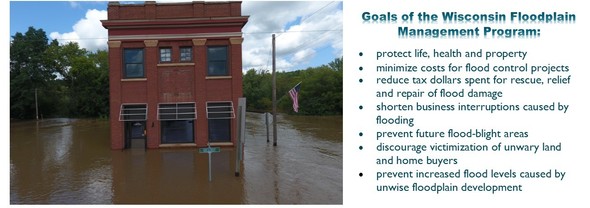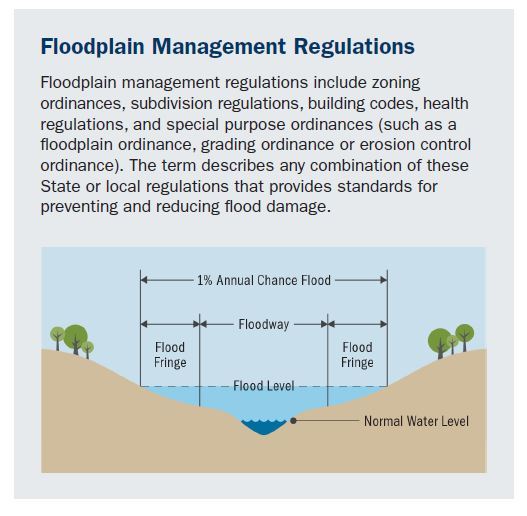|
Volume 18 Issue 2 June 2019

What is a Floodplain?
The non-technical and simplified definition of a floodplain is "an area adjacent to a body of water." But using this definition to determine if your property is in a floodplain is deceiving. You may find your house covered with water from the overflow of a river or stream five miles from your home. Floodplains have varying characteristics and may not be easily identified. Communities experiencing population growth and related development, can create a floodplain where none previously existed.
"Our experience leads us to advise the public that everyone lives in a floodplain," said Louis Botta, federal coordinating officer for FEMA. "Flooding can be brought on by rains, a failed dam or by a drainage system becoming clogged after heavy rains. Even if your property is not in a floodplain, citizens should prepare themselves by getting flood insurance."
Insurance for Floodplain Properties
FEMA statistics show that homes in a floodplain are 26 times more likely to incur damage from a flood than from a fire during a 30-year mortgage. If you want to obtain a mortgage for a property located in an existing, mapped, floodplain and the federal government backs the mortgage, you must purchase flood insurance. The National Flood Insurance Program (NFIP) provides insurance to communities that adopt and enforce floodplain management ordinances to reduce future flood damage.
Be aware:
- Homeowners' policies do not cover flood damages.
- Flood insurance can be obtained for structures located OUTSIDE of the mapped floodplain.
- The time to purchase flood insurance is BEFORE a flood! There is a 30-day waiting period before new NFIP policies take effect. However, if you purchase NFIP flood insurance at the same time that you purchase a new home, the policy takes effect immediately.
How to get Flood Insurance
- First, contact your insurance agent or company. The insurance agent who handles your homeowner’s or renter’s policy could be the same agent who would handle setting up your flood insurance policy.
- If your agent cannot assist you, contact the main office of your insurance company to inquire about obtaining flood insurance.
- If your insurance company cannot help you, call the FEMA National Flood Insurance line: 1-800-427-4661. Help is available in most languages. Individuals who are deaf or hard-of-hearing can use the 711 relay system and ask to speak with someone in the NFIP Call Center.
Questions about your NFIP policy?
If you have a policy with NFIP Direct,

|